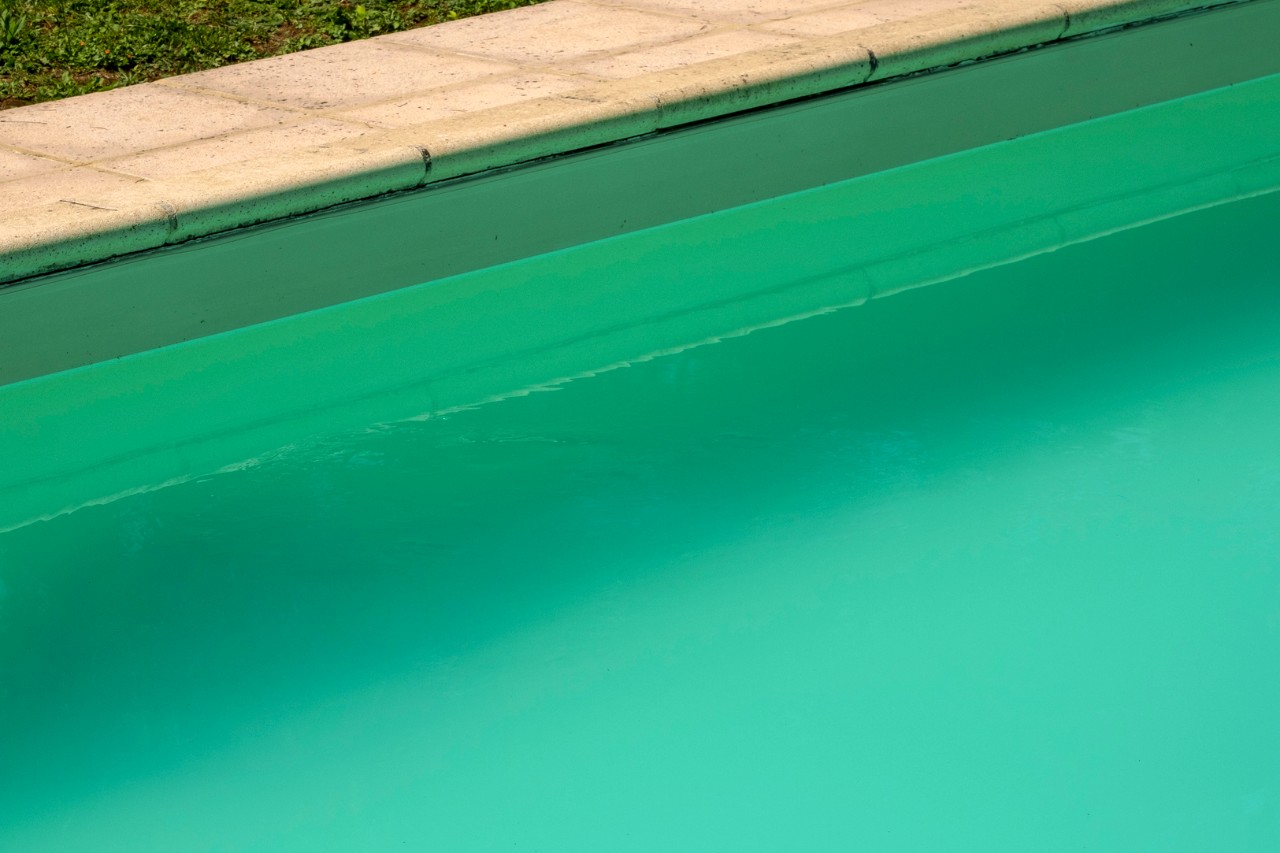There is nothing more frustrating for a pool owner than seeing the water in their pool turn green. This phenomenon can be caused by several reasons, being the most common one the proliferation of algae. Understanding the reasons behind this problem is essential for effectively resolving it an preventing the water for turning green
Algae: Disruptive Elements
Algae are microscopic organisms that naturally develop in water. When conditions are favorable, they can multiply rapidly and give your pool that characteristic green tint. Although unsightly, most algae do not pose a health hazard. However, their presence can promote the growth of potentially harmful bacteria.
Different Types of Algae Present in the Water
By identifying the type of algae present in your pool water, you can adapt your treatment strategy. The most common algae are:
Green Algae: The most widespread and easiest to eliminate in pools.
Yellow or Mustard Algae: These form spots on the walls and the bottom of the pool.
Black Algae: The most stubborn and difficult to eradicate.
When faced with green water, it is essential to react quickly and identify the cause of the problem. By understanding the factors that favor algae development, you can implement suitable solutions and restore a clean and healthy pool.
Triggers for Green Pool Water
Several factors can promote the growth of algae in your pool that can cause the water to turn green.
- Inadequate Water Treatment: An improperly dosed disinfectant or insufficient filtration can create an environment conducive to the development of green algae…
- Chemical Imbalance: A high pH level or incorrect water hardness can reduce the effectiveness of treatment products and encourage algae proliferation in your pool and turn water into green.
Low Alkalinity: Algae thrive in water conditions where the pH is unstable. Low alkalinity can lead to a drop in pH, creating an acidic environment where algae can grow more easily. As a result, the pool water can turn green due to algae proliferation.
High Temperature: Algae thrive in warm water. The higher the temperature of your pool, the faster they grow. This is usually a common cause of green water.
Lack of Maintenance: A poorly cleaned pool with plant debris or biofilm deposits offers a fertile ground for algae that can cause the water to turn green.
Act Quickly to Prevent the Spread of Green Water in the Pool
As soon as you notice a change in color or opacity of the water, it is crucial to act quickly. The longer you wait, the more time algae will have to spread, making the treatment more prolonged and expensive for overall pool maintenance.
How to Prevent Pool Water from Turning Green
Preventing algae in your pool is the best approach to maintaining clear and inviting water throughout the season. By adopting good maintenance habits and regularly monitoring key parameters of your pool, you can create a hostile environment for algae growth.
Regular and Proper Water Treatment
The first pillar of a healthy pool is adequate water treatment. This involves:
- Proper Chemical Balance: Ensure that your pool water pH remains within the recommended range (between 7.2 and 7.4). A pH that is too high or too low reduces the effectiveness of disinfectants and promotes algae growth. Regularly use a test kit to monitor the water pH and adjust it if necessary.
- Appropriate Filtration: Your filtration system plays a crucial role in maintaining clean water. Ensure that your pump runs long enough each day (at least 8 to 12 hours) and regularly clean the filter for optimal performance.
- Effective Disinfection: Maintaining an optimal chlorine or bromine level to destroy algae before they can spread. Automated disinfection systems, such as Zodiac salt chlorinators, make this task easier by continuously regulating the disinfectant level.
Regular Pool Maintenance to Limit Green Water
TIn addition to proper water treatment, regular maintenance of your pool is crucial to prevent algae appearance:
- Brushing Walls and Floor: Weekly brushing of the pool surfaces helps detach algae spores and organic debris that could serve as food for algae.
- Cleaning the Waterline: Greasy deposits that accumulate on the water surface are fertile grounds for algae. Use a specific cleaner to regularly remove these residues.
- Using a Pool Cleaner Robot: Pool cleaner robots, like those offered by Zodiac, help keep your pool clean by eliminating debris before they decompose and promote algae growth. It is one of the best solutions to maintain healthy and clean water.
Complementary Preventive Treatments to Limit Green Water
In addition to basic maintenance measures, some complementary treatments can effectively help prevent algae appearance in the pool:
Regular Use of an Algaecide: Acts as a preventive barrier against algae.
Adding a Clarifier: Improves filtration by agglomerating fine suspended particles.
Balance phosphate levels: If they are too high use a phosphate remover
Installing a UV System or Ozonator: Destroys algae and other unwanted microorganisms.
By combining rigorous water treatment, regular pool maintenance, and complementary preventive measures, you can keep your pool free from green water throughout the season. Remember, prevention is always simpler and less costly than treating a pool invaded by algae.






